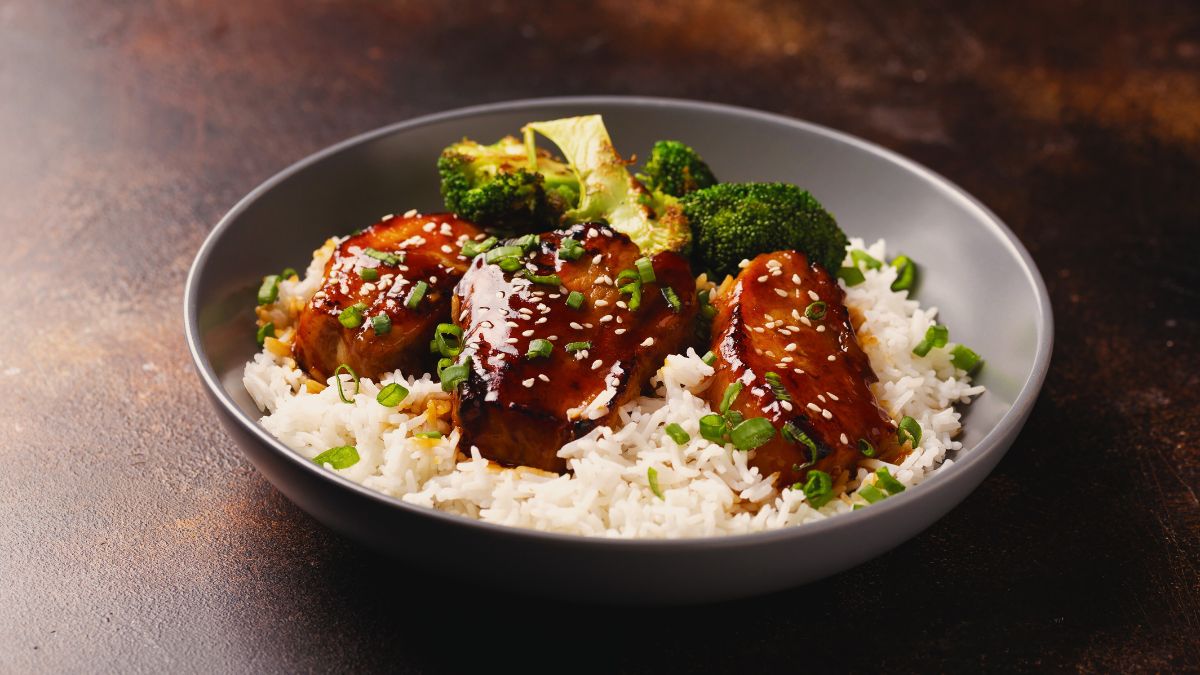Chicken teriyaki, a dish characterized by its rich, sweet-savory sauce and succulent chicken, has become a staple on dining tables around the world. Its origins are deeply rooted in Japanese cuisine, but its journey from a traditional Japanese dish to a global favorite is a fascinating tale of culinary evolution and cross-cultural exchange. Let’s dive into the history, preparation, and modern variations of chicken teriyaki.
The Origins of Teriyaki
The term “teriyaki” is derived from two Japanese words: “teri,” meaning “gloss” or “shine,” and “yaki,” meaning “grill” or “broil.” This technique involves grilling or broiling meat that is brushed with a sweet, savory sauce, resulting in a shiny, caramelized coating. The sauce itself is a harmonious blend of soy sauce, mirin (a sweet rice wine), sake (Japanese rice wine), and sugar.
Historically, teriyaki techniques were used with various types of meat, but chicken became a popular choice, especially in the latter half of the 20th century. The dish’s roots can be traced back to traditional Japanese cuisine, where grilling meats with sweet and salty sauces has long been a common practice. However, the specific preparation of chicken teriyaki as we know it today began to take shape in the post-World War II era.
The Journey to the West
In the mid-20th century, Japanese immigrants and the growing interest in international cuisines introduced teriyaki to Western countries, particularly the United States. The popularity of Japanese cuisine in America surged during the 1970s and 1980s, thanks in part to the opening of Japanese restaurants and the increasing availability of Asian ingredients in mainstream grocery stores.
Chicken teriyaki became an easy entry point for those unfamiliar with Japanese food, thanks to its approachable flavors and simple preparation. Its sweet-savory profile, combined with its ease of preparation, made it a hit in both restaurants and home kitchens.
How Chicken Teriyaki is Made
The preparation of chicken teriyaki involves marinating the chicken in a mixture of soy sauce, mirin, sake, and sugar. The marination process infuses the chicken with flavor, while the cooking method—grilling, broiling, or pan-frying—creates a delicious glaze. Here’s a simple recipe to recreate this beloved dish at home:
Ingredients:
- 4 boneless, skinless chicken thighs or breasts
- 1/2 cup soy sauce
- 1/4 cup mirin
- 1/4 cup sake (or dry white wine)
- 2 tablespoons sugar
- 1 tablespoon vegetable oil
Instructions:
- Marinate the Chicken: In a bowl, mix soy sauce, mirin, sake, and sugar until the sugar is dissolved. Place the chicken in the marinade and refrigerate for at least 30 minutes, or overnight for more flavor.
- Cook the Chicken: Heat vegetable oil in a skillet over medium heat. Remove the chicken from the marinade (reserve the marinade) and cook the chicken for about 5-7 minutes per side, or until fully cooked and golden brown.
- Prepare the Sauce: While the chicken is cooking, pour the reserved marinade into a small saucepan. Bring to a simmer over medium heat and cook until the sauce is slightly thickened.
- Finish and Serve: Once the chicken is cooked, brush it with the reduced teriyaki sauce or drizzle it over the top. Serve with steamed rice and vegetables for a complete meal.
Modern Variations and Global Adaptations
In recent years, chicken teriyaki has evolved to include various adaptations that cater to different tastes and dietary preferences. From teriyaki bowls with a variety of vegetables and grains to creative takes like teriyaki chicken tacos or burgers, the dish has proven to be versatile and adaptable.
For those seeking healthier options, low-sodium soy sauce and alternative sweeteners can be used to create a lighter version of the classic dish. Additionally, some recipes incorporate unique ingredients like pineapple or sesame seeds to add a new twist.
Conclusion
Chicken teriyaki’s rise from a traditional Japanese grilling technique to an internationally beloved dish highlights the dynamic nature of global cuisine. Its journey reflects not only the growing appreciation for diverse food cultures but also the ways in which culinary practices evolve and integrate into different culinary traditions. Whether enjoyed in a Japanese restaurant or prepared at home, chicken teriyaki remains a testament to the delicious possibilities of blending cultural flavors and techniques.
